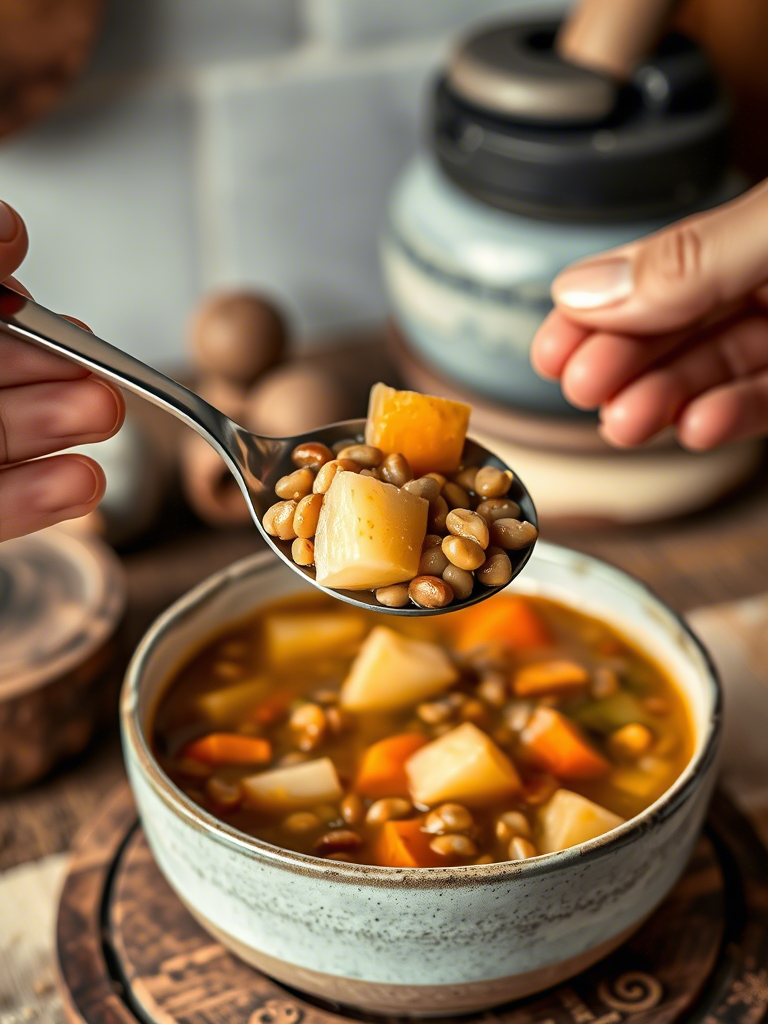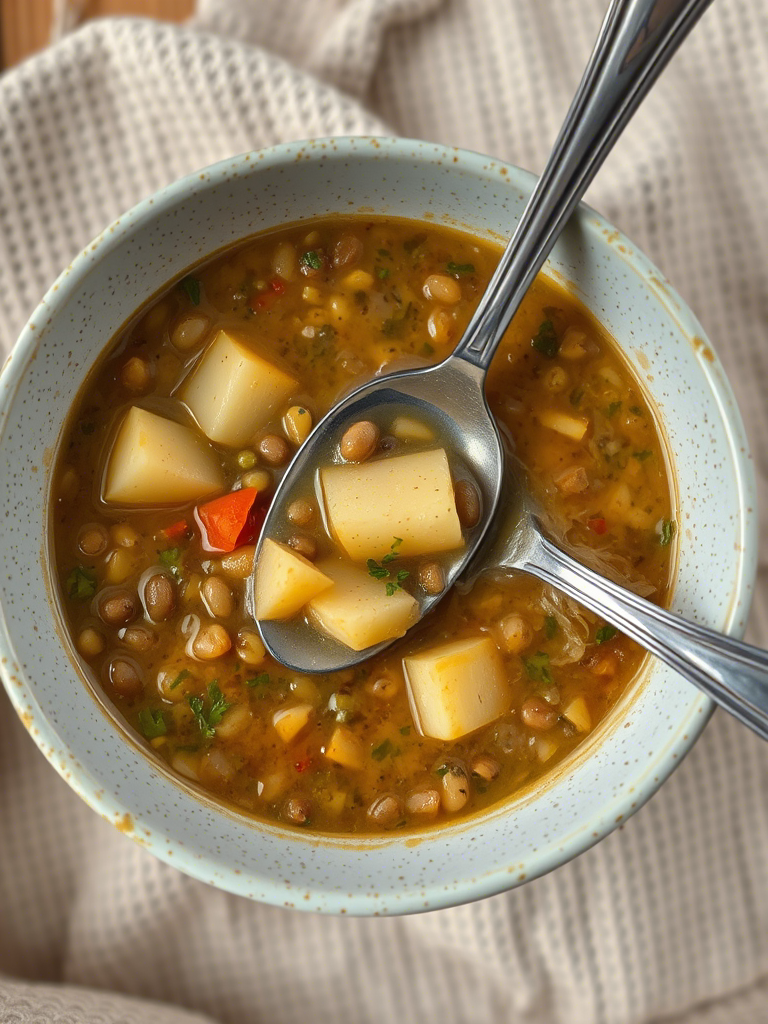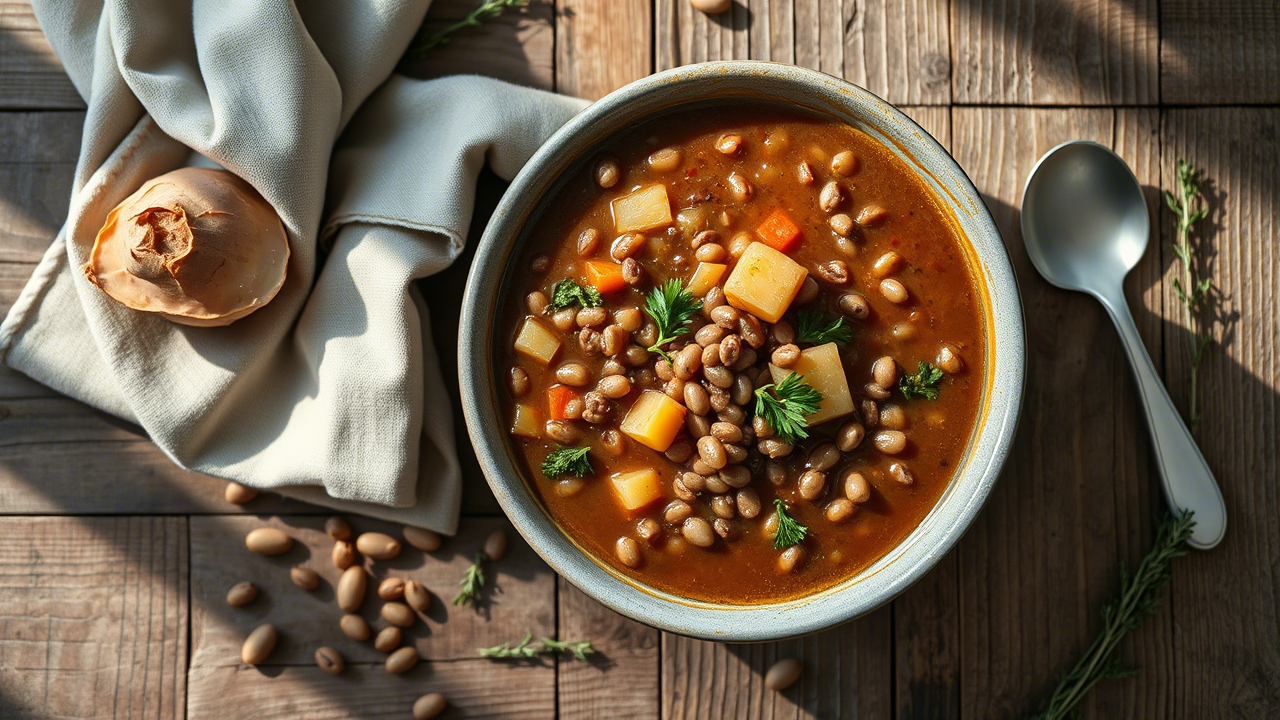There’s something maddeningly magical about a pot of lentil and potato soup simmering on the back burner. It doesn’t scream for attention. It doesn’t need to. This dish, humble as it sounds, has quietly earned its place as a backbone in professional kitchens and home hearths alike.
But don’t be fooled. Behind this earthy bowl lies centuries of nutritional strategy, culinary chemistry, and dare I say—craft. We’re not talking about your grandma’s “toss-everything-in” stew (although that’s half the charm). This is a masterclass in layering flavors, balancing macronutrients, and manipulating texture like a culinary architect.
So here’s the real meat of it—or rather, the legume of it.
The Beauty in the Basics: Lentils and Potatoes Are Anything But Basic
Lentils are pulses. Not beans, not peas, but their own little category of protein-rich powerhouses. You’ve probably heard that they’re high in fiber, iron, and protein. What you may not know is that they’ve been sustaining civilizations from the Middle East to the Indian subcontinent since 8000 BCE. Potatoes, on the other hand, get a bad rap. Too starchy, people say. Empty carbs, they say. But dig deeper—literally and figuratively—and you’ll uncover resistant starches, vitamin C, potassium, and culinary versatility that few root vegetables can match.
Together? They’re a duo that plays off each other beautifully. The lentils provide body. The potatoes lend silkiness when broken down, acting almost like a natural roux.
Why Chefs Actually Like Making This Soup
This isn’t just a “cheap and easy” weekday dinner.
Professional chefs lean into lentil and potato soup for a couple reasons. First—control. Unlike other soups that demand cream, butter, or long reductions, this one behaves. You can taste as you go and shift gears fast. Add acid, and you brighten it. Toss in fat, and you deepen the flavor.
Second, the cost-to-flavor ratio is off the charts. A 10-litre batch for a restaurant might cost under $8 in ingredients, yet plate like something three times as refined. At scale, this is gold. Especially in vegan or vegetarian-forward menus.

Anatomy of the Soup: Breaking It Down Like a Pro
Lentils: Not All Are Created Equal
Choose wisely. Green lentils (like French Puy) hold their shape and bite. Great for texture contrast. Red lentils? They melt like butter. Perfect if you want a smoother, more velvety mouthfeel.
One rookie mistake? Mixing types. Don’t. They cook at different rates. That’s a nightmare for consistency, especially in a commercial kitchen where batching matters.
Want a pro tip? Toast the lentils before adding liquid. Yup. Just like you’d toast rice for risotto or barley in a stew. It brings out a nutty aroma that makes people go, “What is that flavor?”
Potatoes: They’re Not Just Filler
Go starchy. Russets work best if you want them to break down and thicken the soup. Waxy potatoes like Yukon Golds hold their shape, which is great for bite and presentation.
Don’t peel them too early. Oxidation ruins everything. And don’t just dump ‘em into boiling water. Sauté them first with the mirepoix. Let them soak in those aromatics.
Wanna go full nerd? Potatoes are about 80% water. When you dice them and sweat them slowly in oil, you’re actually reducing their moisture a bit and concentrating flavor. Sounds like kitchen alchemy? Because it is.
The Mirepoix: It Starts Here, Always
Every great soup begins with aromatics. Onions, carrots, celery. You can get fancy with leeks, shallots, parsnips—go nuts. But the secret’s not what you use. It’s how long you let them go.
Low and slow. You’re not just softening them; you’re coaxing out sugars, building complexity. Add a pinch of salt early to help them release moisture and cook evenly. That’s osmosis at work, baby.
The Broth: More Than Just Background Noise
Vegetable broth is the obvious go-to here. But not just any boxed broth. Make your own if you can. At least once. Roast your veggies first, add tomato paste, deglaze with wine, simmer with peppercorns, bay leaf, and thyme. You’ll get depth without overpowering the lentils.
But honestly? Water works too—if you salt it right and build enough umami elsewhere (enter: mushrooms, miso, nutritional yeast, or even just a dollop of tomato paste).
The Science Behind the Simmer
Soup isn’t just cooking. It’s chemistry.
When lentils break down, they release soluble fiber—beta-glucans and resistant starches that thicken the soup naturally. This is why you don’t need cream to get that richness. But temperature matters. Too high, and lentils toughen. Keep the heat medium-low and give them time to soften gently. This isn’t a stir-fry—patience wins.
Potatoes contain amylose and amylopectin, two types of starch that behave differently under heat. When they rupture during simmering, they bind with water and thicken the liquid. That’s why the soup gets creamier without any actual dairy.
This is how grandma made food taste good before emulsifiers existed.

Flavors That Stick: Building Depth
Depth doesn’t come from salt alone. Here’s where things get fun.
Start with spices. Ground cumin, coriander, paprika, turmeric—these are foundational. Bloom them in fat. Not water. Never water. Heat oil, toss in the spices, and let them sizzle for 30 seconds. This releases volatile oils. It’s aroma science, not just tradition.
Want even more edge? Add a splash of vinegar or lemon juice right before serving. Acidity cuts through the starch and wakes everything up. Even better—drop in a swirl of yogurt or drizzle of chili oil for contrast.
If you’re into global spins, try:
- Indian: Garam masala, ginger, garlic, and a mustard seed tadka poured on top.
- Mediterranean: Rosemary, thyme, a splash of red wine, and a hint of smoked paprika.
- East African: Berbere spice, red lentils, and coconut milk.
Each one tells a story in a bowl.
Misconceptions That Need to Die Already
“Lentils are boring.” Not when you treat them like the main character.
“Potatoes are unhealthy.” That depends entirely on what you do with them.
“Soup is just for winter.” Nonsense. This dish works chilled, too. Especially with mint, lemon, and a thinner broth. Ever had cold lentil soup in the summer with a slice of rustic bread? Absolute poetry.
“It’s not filling enough.” Per 1-cup serving, lentils pack around 18 grams of protein and 16 grams of fiber. Add potatoes and you’ve got satiety dialed in.
Real-World Applications: This Soup Pays Its Rent
Chefs in high-volume kitchens rely on this soup as a service anchor. One big batch feeds 20+. Leftovers turn into spreads, dips, or even pasta sauce bases.
Dietitians love it for diabetic clients—low glycemic index, high fiber, plant-based protein.
Prep kitchens use it in meal kits because it holds well, freezes beautifully, and reheats like a charm.
In fine-dining? It appears as a base for sous-vide fish or topped with crispy shallots and microgreens. Don’t underestimate the elevation potential of lentil soup.
Pro Tips from the Field
- Use smoked salt instead of regular for a campfire-esque finish.
- Don’t over-blend. Texture is key. Leave some chunks.
- Add greens in the last five minutes—kale, spinach, or collards. They add freshness and bite.
- Make it a meal. Top with poached egg, shaved Parmesan, or croutons fried in garlic oil.
- Chill it overnight. Flavors meld and deepen. Always better on day two.
Nutrition Breakdown (Per Cup)
- Calories: ~230
- Protein: 17–18g
- Carbs: 34g
- Fiber: 15g
- Fat: 2–4g (depending on oil)
- Iron: ~35% RDA
- Potassium: 600mg+
- Saturated Fat: <0.5g
This ain’t just good soup. It’s functional food, backed by science.
So, Why Aren’t You Making This Right Now?
That’s the real question, isn’t it? Whether you’re a line cook, a recipe developer, or a home cook trying to feed a family on a budget, this soup works. It checks every box: affordable, nutritious, satisfying, scalable, customizable, and let’s not forget—delicious.
It’s the kind of dish that earns repeat requests. The kind that sneaks its way onto fine-dining menus and food truck specials alike. And the kind that, once mastered, becomes part of your culinary identity.
Not every soup can do that. This one can.
Now go simmer something great.
FAQs
What type of lentils work best for hearty lentil and potato soup?
Green lentils hold their shape well, while red lentils melt into the broth for a creamy texture.
Can I use water instead of vegetable broth?
Yes, as long as you season it well and build flavor with aromatics and spices.
What kind of potatoes are best for this soup?
Russet potatoes for a creamy texture, or Yukon Golds if you want them to hold shape.
Is this soup good for meal prep?
Absolutely—it stores, freezes, and reheats beautifully without losing flavor.
How do I deepen the soup’s flavor?
Toast your spices in oil, sauté your aromatics well, and finish with acid like lemon or vinegar.
Is the soup high in protein?
Yes, thanks to lentils—it delivers around 17–18g protein per cup.
Can I make this soup vegan?
It already is—just ensure your broth and toppings are plant-based.
Does it work as a summer dish too?
Yes, serve it chilled with herbs and lemon for a refreshing twist.
What spices go well in this soup?
Cumin, coriander, paprika, turmeric, or even berbere and garam masala for a global touch.
Can I blend the soup for a smoother texture?
Yes, but leave some chunks for that hearty, satisfying bite.
Is it diabetic-friendly?
Definitely—it’s low-GI, fiber-rich, and balanced in complex carbs.
How can I make it more filling?
Top with a poached egg, crispy croutons, or stir in greens like kale or spinach.
Does the soup taste better the next day?
Yes, the flavors meld and deepen after chilling overnight.

Mariana is a passionate home cook who creates delicious, easy-to-follow recipes for busy people. From energizing breakfasts to satisfying dinners and indulgent desserts, her dishes are designed to fuel both your body and hustle.
When she’s not in the kitchen, she’s exploring new flavors and dreaming up her next recipe to share with the Foodie Hustle community.

